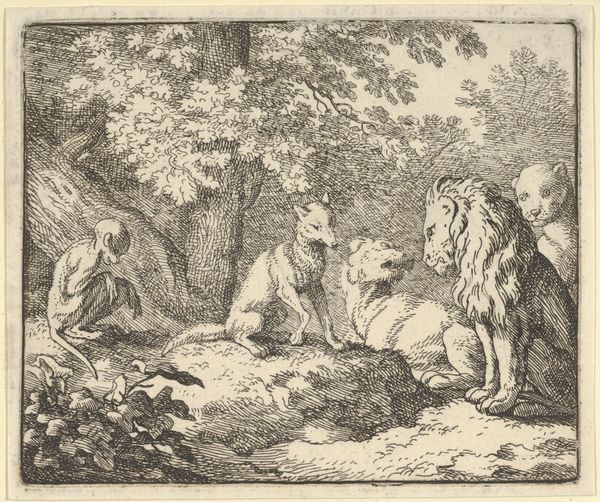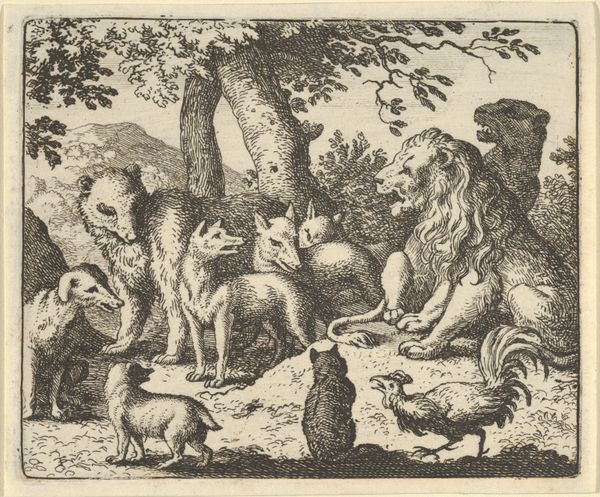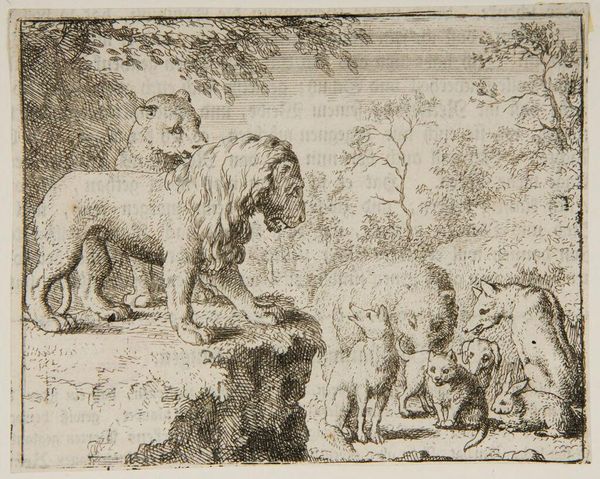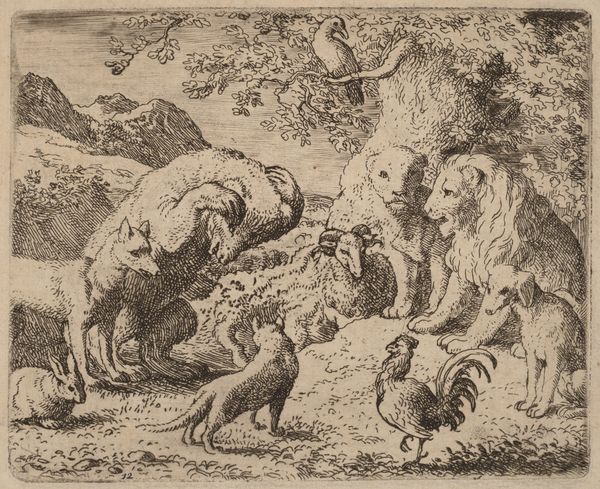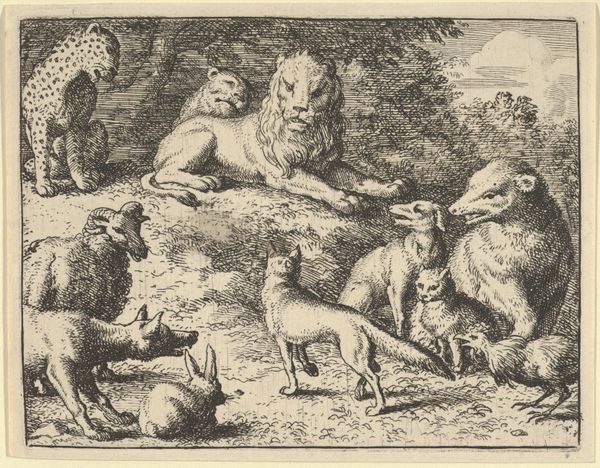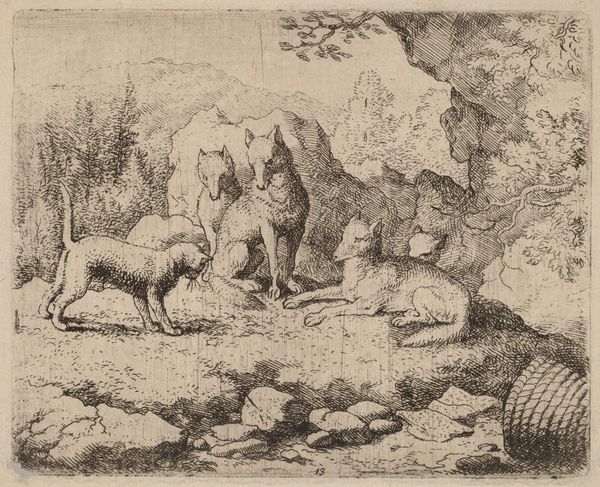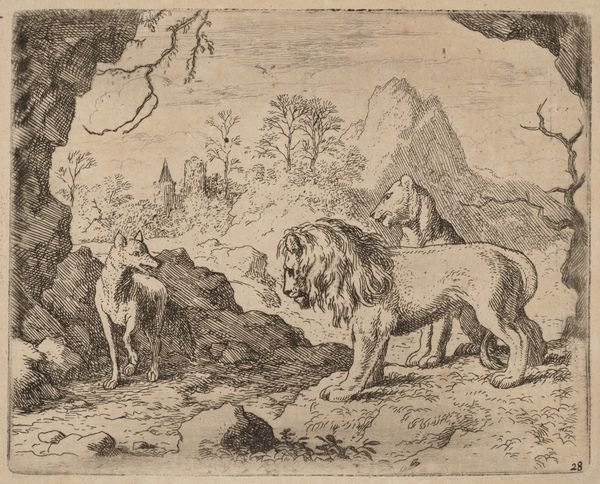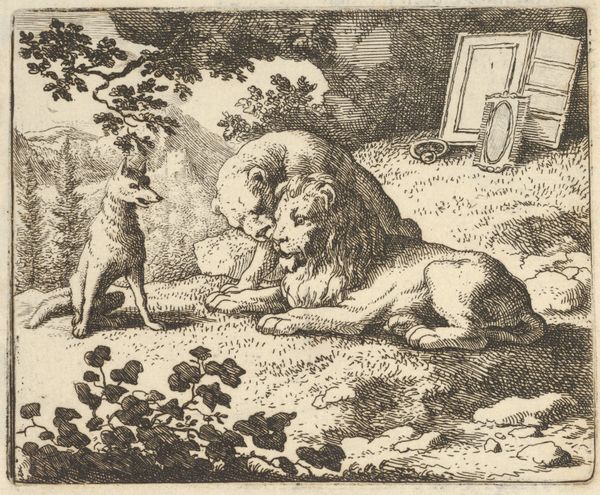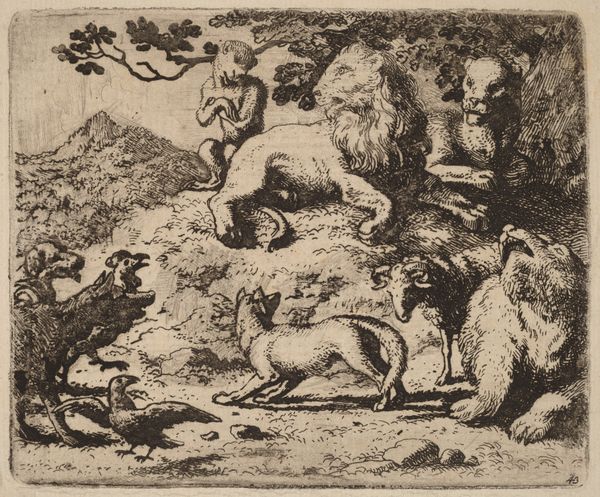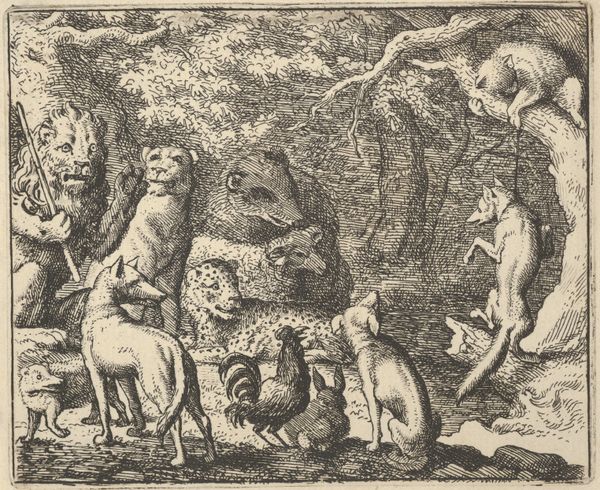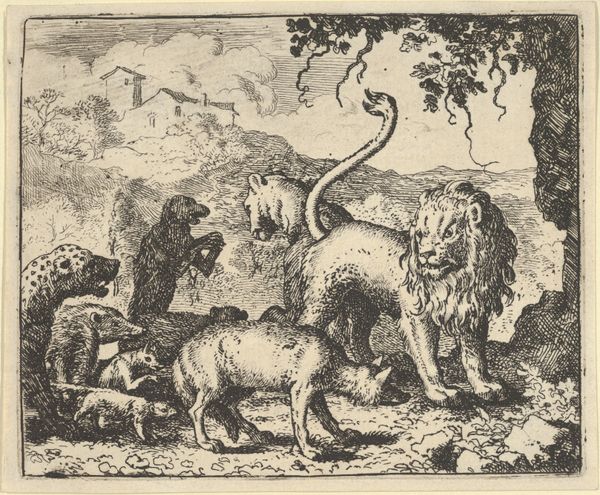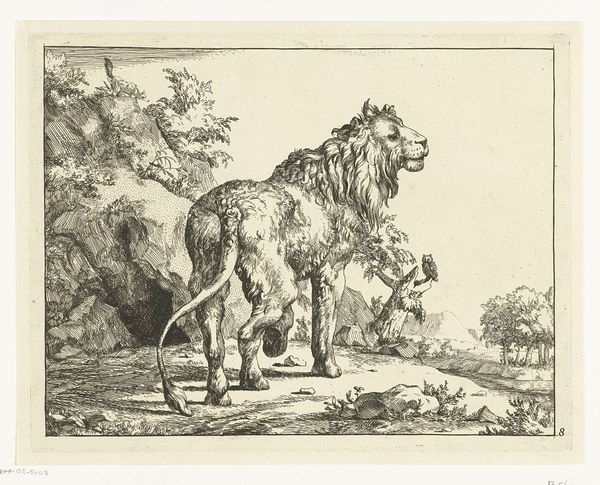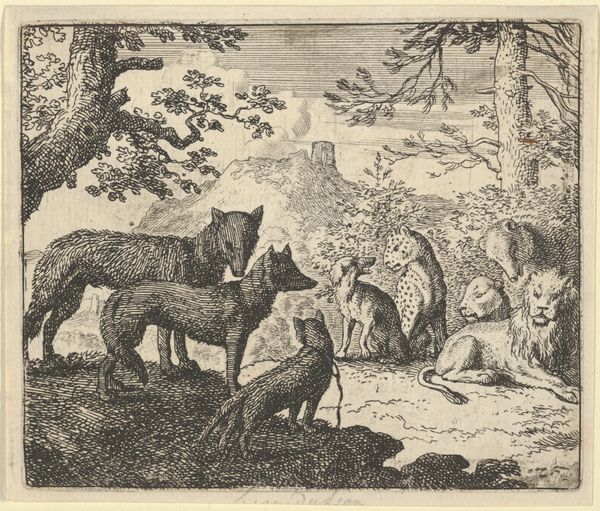
The Lion Pardons Reynard before the Other Animals c. 1645 - 1656
0:00
0:00
drawing, print, etching, ink
#
drawing
#
ink drawing
#
narrative-art
#
baroque
# print
#
etching
#
ink
#
genre-painting
Copyright: National Gallery of Art: CC0 1.0
Curator: Editor: Here we have Allart van Everdingen's "The Lion Pardons Reynard before the Other Animals," made sometime between 1645 and 1656. It looks like an ink drawing or maybe an etching? There's something a bit somber about it. What strikes you when you look at this piece? Curator: The medium itself is what immediately grabs me – the printmaking process. Etching allowed for a dissemination of images to a broader audience, a market hungry for accessible narratives. This piece hints at that intersection between art, labor, and distribution. Consider how these prints might have been consumed: were they hung in wealthy homes as decorative objects or used in more informal, educational settings? Editor: That's a great point. The reproducibility makes you wonder who the audience really was. But, getting back to the image itself, do you think Everdingen had a political agenda in portraying this particular fable? Curator: Potentially, but more intriguing is *how* he conveys it. He is using the animal fable, a genre which traditionally offered thinly veiled critiques of social hierarchies. The choice of printmaking – a relatively democratic medium – amplifies that social commentary. Think about the cost of the materials involved: the copper plate, the acid, the paper. Where did Everdingen source these, and how does that relate to the broader Dutch economy of the time? Editor: So, rather than focusing solely on the narrative, you're drawn to the materials and their context. It does make you think about the physical process, from start to distribution. Curator: Precisely! And how that process democratizes both access and critique, complicating our understanding of art's role in 17th-century Dutch society. We can engage with this artwork not as just an image, but as evidence of its making, which adds so many layers. Editor: I never thought about printmaking this way! Seeing it as a material process rooted in a specific historical and economic moment adds a completely new dimension. Curator: Exactly!
Comments
No comments
Be the first to comment and join the conversation on the ultimate creative platform.
